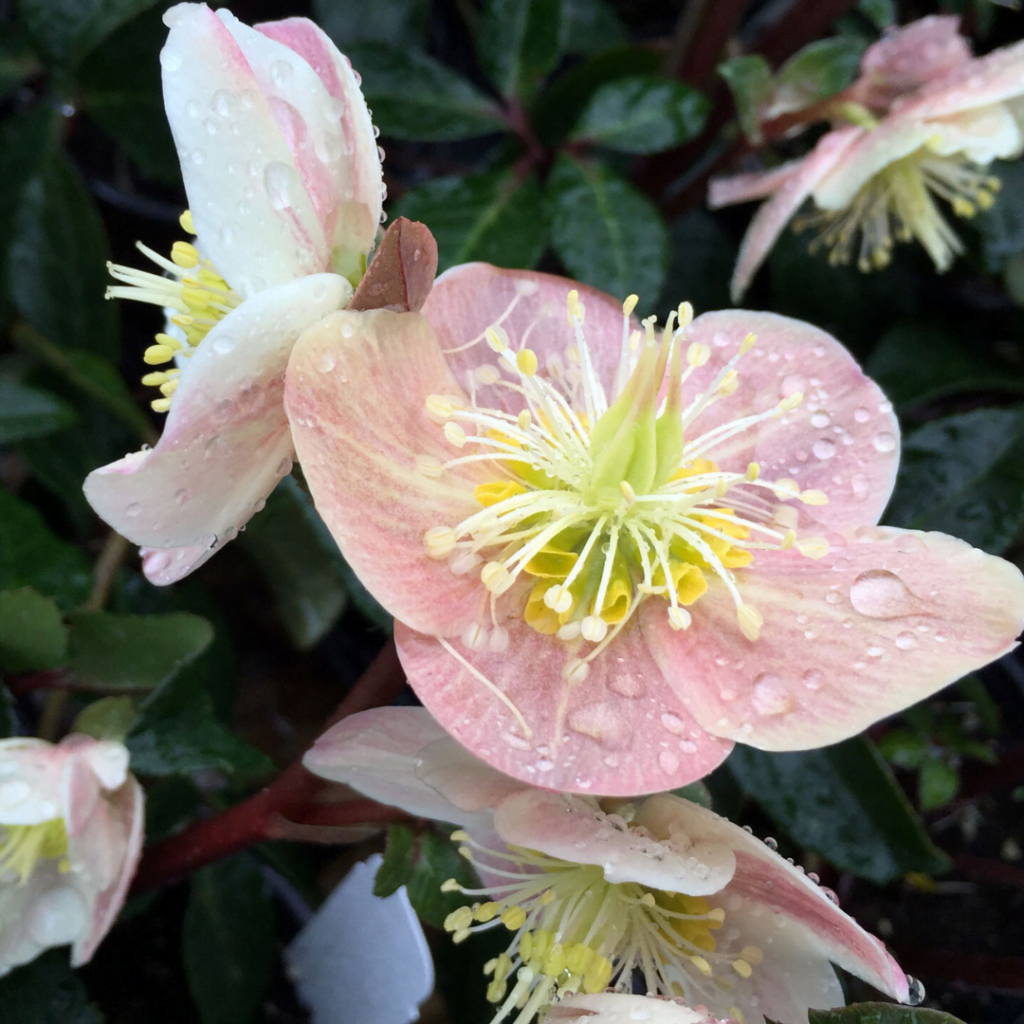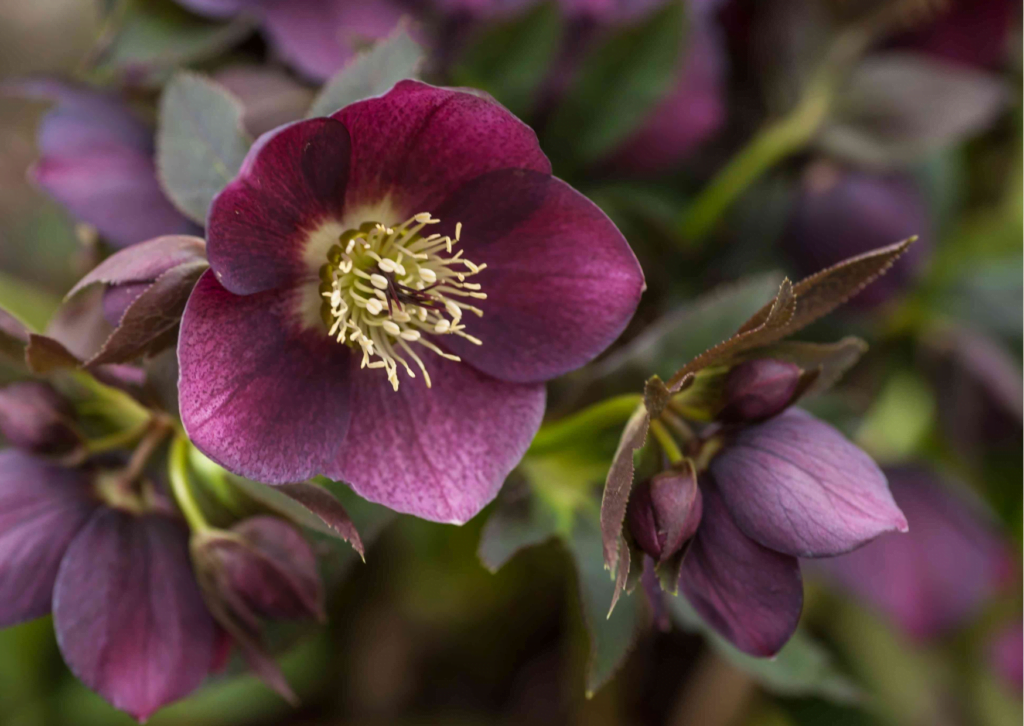Introduction
In this detailed review, we explore the enchanting world of the outdoor Hellebore, a plant that has captured the hearts of gardeners for its resilience and captivating beauty. Known for its ability to bloom in the chill of winter, the Hellebore is a unique addition to any garden. This review delves into every aspect of caring for these plants, providing an insightful guide for both novice and experienced gardeners. We aim to equip you with the knowledge to nurture and enjoy the Hellebore’s enduring charm, maintaining a positive outlook throughout this exploration.
The key specifications of outdoor Hellebore plants:
| Key Specification | Detail |
|---|---|
| Common Names | Lenten Rose, Christmas Rose, Winter Rose |
| Botanical Name | Helleborus spp. |
| Family | Ranunculaceae |
| Plant Type | Perennial |
| Mature Size | Typically 1-1.5 feet tall, 1-1.5 feet wide |
| Sun Exposure | Partial shade; can tolerate full sun in cooler climates |
| Soil Type | Well-draining, rich in organic matter |
| Soil pH | Slightly acidic to neutral (pH 6.5 to 7.5) |
| Snowing Surviving | Capable of blooming in snow; frost-hardy |
| Bloom Time | Late winter to early spring |
| Flower Color | White, pink, purple, green, often with patterns or spotting |
| Hardiness Zones | Typically zones 4-9, depending on the variety |
| Native Area | Europe and Asia |
| Benefit | Deer-resistant, early bloomers, shade-loving, adds winter interest to gardens |
The key specifications of outdoor Hellebore plants. Each category from common names to specific benefits is expanded upon, giving a clear and comprehensive picture of what these beautiful and resilient plants offer.
Plant Care
Caring for the Hellebore involves a blend of simplicity and attentiveness. These plants are surprisingly low maintenance, yet they flourish under the right conditions. From selecting the ideal location to understanding their growth cycle, every step in caring for Hellebores is a journey towards a blooming garden.
Sun Exposure
Hellebores thrive in partial shade, a unique characteristic that sets them apart from many flowering plants. This section explains the ideal balance of light and shade required for optimal growth, debunking myths and highlighting the plant’s adaptability.
Soil
The foundation of healthy Hellebores lies in the soil. This section delves into the type of soil these plants prefer, emphasizing the importance of drainage and pH balance. Learn how to prepare and maintain the perfect soil conditions for your Hellebores.
Water
Watering is a critical aspect of Hellebore care. This part of the review focuses on the watering needs of the plant, providing guidelines for maintaining the perfect moisture level, and avoiding common pitfalls such as overwatering or under-watering.
Temperature and Humidity
Hellebores are known for their hardiness, but they still have preferences when it comes to temperature and humidity. This section explores the ideal conditions for these plants and offers tips on how to protect them from extreme weather.
Surviving Snow
One of the most remarkable traits of the Hellebore is its ability to survive and even bloom in snow. This section provides insights into how these plants manage to thrive in snowy conditions and how you can help them through harsh winters.
Pruning
Pruning is essential for the health and aesthetic appeal of Hellebores. This section covers the best practices for pruning, including when and how to prune to encourage blooming and maintain a healthy plant.
Overwintering
Overwintering Hellebores can be a concern for gardeners in colder climates. This part of the review offers detailed advice on how to prepare your Hellebores for winter, ensuring they emerge healthy and vibrant in spring.
Fertilizer
The right fertilizer can make a significant difference in the growth and flowering of Hellebores. This section discusses the types of fertilizers suitable for these plants and the ideal fertilization schedule.
Propagating the Plant
Propagating Hellebores is a rewarding experience. This section guides you through the propagation process, from division to seed sowing, ensuring successful multiplication of your beloved plants.
Types of Hellebore Plants
Hellebores, also known as Lenten roses, come in a variety of types, each with its unique charm. Some popular varieties include:
- Helleborus niger (Christmas Rose): Known for its pure white flowers, which bloom around Christmas in milder climates.
- Helleborus orientalis (Lenten Rose): Offers a range of colors from white to pink to purple, often with intricate spotting or veining.
- Helleborus x hybridus: A hybrid group with a wide color palette and forms, including double-flowered and picotee-edged varieties.
- Helleborus foetidus (Stinking Hellebore): Features pale green, bell-shaped flowers and is known for its resilience in shady spots.
Each type has its own specific care needs, but all share the same robust nature and love for shaded environments.
Common Pests & Plant Diseases with Solutions
Hellebores are relatively disease-resistant, but they can encounter some problems:
- Aphids: These small pests can suck sap from new growth. Use a strong water spray to dislodge them or apply insecticidal soap.
- Black Spot: This fungal disease causes dark spots on leaves. Improve air circulation, avoid overhead watering, and remove affected foliage. Fungicide can be used as a preventative measure.
- Hellebore Leaf Miner: These larvae tunnel into leaves, causing blisters. Remove and destroy affected leaves to control their population.
- Slugs and Snails: They can chew on leaves and flowers. Use slug baits or traps and encourage natural predators like birds and toads.
Regular monitoring and maintaining good cultural practices are key to managing these issues.
How to Get Outdoor Hellebores to Bloom
Encouraging Hellebores to bloom involves several key practices:
- Adequate Light: While they enjoy shade, too much can reduce blooming. Ensure they receive some dappled sunlight.
- Proper Nutrition: Apply a balanced, slow-release fertilizer in early spring to support flowering.
- Age of Plant: Young Hellebores may not bloom in their first year. Patience is often required as they establish themselves.
- Soil Conditions: Ensure the soil is well-draining and rich in organic matter.
- Pruning: Remove old foliage in late winter to allow new blooms to emerge unobstructed.
Common Problems With Hellebore Plants
- Yellowing Leaves: This can be due to over-watering or poor drainage. Ensure the soil is moist but well-drained.
- Lack of Flowering: Apart from the factors already mentioned, excessive nitrogen can encourage leaf growth at the expense of blooms. Adjust your fertilizing practice accordingly.
- Drooping or Wilting: This could be a sign of either too much or too little water. Adjust your watering routine based on soil moisture levels.
- Frost Damage: While hardy, young blooms can be damaged by late frosts. Protect with cloches or fleece if a cold snap is forecast.
Understanding and addressing these common issues will help keep your Hellebores thriving and enhance their beauty in your garden.
Addressing Rapid Decline
Sometimes, Hellebores can decline quickly. This section is dedicated to diagnosing and addressing common issues that lead to the rapid decline of these plants, offering practical solutions to revive and restore their health.
Gardener’s Reflections
In this final section, we reflect on the joys and challenges of growing Hellebores. Emphasizing their unique beauty and resilience, we conclude with a positive note on why these plants are a must-have in every garden.
Frequently Asked Questions
Decode the magic of gardens with our guide to Landscaping Styles Frequently Asked Questions.
- Hellebores require consistent moisture but don’t fare well in overly wet conditions. The frequency of watering depends on your climate and soil type. In general, water them once a week during dry periods, ensuring the soil is moist but not waterlogged. In cooler climates or during rainy seasons, they may require less frequent watering. It’s essential to let the soil dry out slightly between waterings to prevent root rot.
- Hellebores prefer partial shade, especially in areas with hot summers. However, they can tolerate full sun in cooler climates or when they have adequate moisture. In regions with intense sunlight, it’s best to provide them with some afternoon shade to protect their delicate blooms and foliage. Remember, too much sun can lead to scorched leaves and stress the plant.
- The ideal time to prune Hellebores is in late winter or early spring, just as new growth begins. This is typically around late February to early March, depending on your climate. Pruning at this time helps remove old, damaged, or diseased foliage and makes way for fresh blooms. It’s also a good opportunity to cut back any foliage that looks unsightly or has been damaged over winter.
- If your Hellebore is not flowering, consider a few potential issues. First, ensure it’s planted in appropriate conditions – partial shade, well-draining soil, and adequate moisture. If the plant is too young, it may not bloom in its first year or two. Overcrowding can also affect blooming, so consider dividing the plant if it’s been in the same spot for several years. Additionally, lack of nutrients can hinder flowering, so applying a balanced, slow-release fertilizer in early spring may help. Finally, ensure you are not pruning the flower buds, which can sometimes be mistaken for old foliage.
Recent Posts
- Modern Mural Ideas Transforming Walls into Artworks
- Thematic Table Decor Dressing Your Table for Special Occasions
- Festive Lighting Ideas Brightening Your Home for the Holidays
- Biodegradable Decor Materials Choosing Earth-Friendly Options
- Personalized Space Decor Making Your Home Uniquely Yours
- New Year’s Eve Decor Ringing in the New Year in Style
- Transforming Junk into Decor Upcycling at Its Best
- Second-Life Decor Objects Giving Old Items New Purpose
- Unique Decoration Crafting Standout Ideas for Your Home
- Environmentally Friendly Styling Decor with a Conscience











